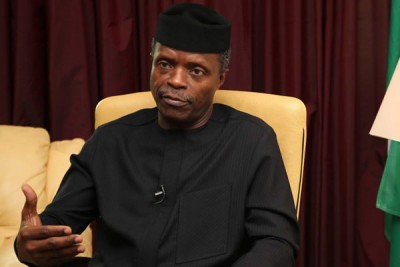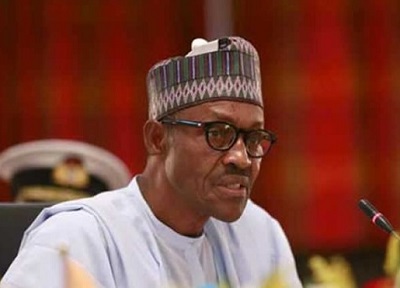Naira loses 10.6% of its value annually, says IMF
The International Monetary Fund says the long-term rate of the depreciation of the naira equates to a loss of 10.6 per cent of its value annually since 1973.
According to the IMF, this rate is 1.5 times higher than the long-term rate of the currencies of other emerging market and developing economies at 7.2 per cent, and Sub-Saharan Africa at seven per cent over the same time period.
The Washington-based lender disclosed this in its ‘Nigeria: Selected Issues Paper’ report. According to the report, this is one of the reasons why Nigeria’s inflation rate is higher than that of its peers.
The report read in part, “Nigeria’s long term average rate of CPI inflation (1971-2020) was 16 per cent, which is higher than both SSA (13 per cent) and EMDE (13.6 per cent) averages.
“Compared to SSA (7.2 per cent) and EMDE (6.2 per cent) median, the difference is more pronounced. Two possible explanations come to one’s mind upon data investigation. First, Nigeria’s broad money (M3) growth has been persistently high — with its 50-year average registering 21.2 per cent. This is 1.5 and 1.3 times more than EMDE (18.5 per cent) and SSA (16.7 per cent) averages respectively.
“Likewise, its exchange rate underwent more persistent depreciation. Nigeria’s long-term rate of currency depreciation (on average 10.6 per cent annually since 1973) was 1.5 times higher than both EMDE (7.2 per cent) and SSA (seven per cent). Given limited availability of long-term data, it is difficult to estimate the exact reasons.
“However, the historical behaviour of NEER shows that Nigeria’s NEER depreciation episodes tended to be more abrupt and disorderly compared with EMDE and SSA peers, where exchange rate adjustments have been far more continuous and smoother.
“It would thus not be implausible that the more reactive and disruptive exchange rate adjustment tends to be, the larger the risk of inflation-depreciation spiral would become—because expectations are unhinged, and confidence undermined more.”
According to the IMF, Nigeria utilised an exchange rate anchoring strategy, shifting from a flexible regime to a fixed one in 2004.
It added that while this might have helped to stabilise the nation’s inflation expectations in the interim, it unraveled in 2015 as the global oil price crash plunged the naira into a spell of large, repeated depreciation.
It added that in recent times, exchange rate shocks had played an important role in recent inflation dynamics.
According to the IMF, exchange rate shocks have accounted for about 38 per cent of the overall price shock, with about 62 per cent of naira’s depreciation being reflected in inflation.
It said, “Exchange rate shock is estimated to have accounted for 38 percent of the overall price shock. However, our analysis suggests that the exchange rate shock has been plateauing.
“Our estimation also shows that despite the CBN’s various attempts to defend the I&E rate, which has helped contain exchange rate shock to inflation to a degree, 62 per cent of naira’s depreciation as reflected in the BDC rate (which is more deprecated than I&E rate) has already been passed through to inflation.”
According to a senior lecturer of Economics at the Pan Atlantic University, Dr Olalekan Aworinde, the naira is depreciating because the demand for it is not high, since production within the country is limited.
He said, “The depreciation of the currency is something that is not new. Over time, we have seen the naira depreciate constantly. Hardly do we witness the appreciation of the naira.
“This is not farfetched; the naira keeps depreciating because the demand for the naira is not as high as expected. This is coupled with the fact that there is also a lot of food inflation in the country. We do not produce anything that will make people demand for the naira. If Nigeria was producing something, then the implication is that a lot of people might need to demand for the naira, but we do not produce anything of value.
“We only produce raw materials and semi-finished goods that are of lesser value. The naira is not in demand and this is why it keeps depreciating. The implication of this is that we’ll be consuming imported goods, and the majority of these goods might be imported inflation and, as such, it would bring an increase in the services of goods and services over time.
“The naira will continue to depreciate unless the government does something in terms of the manufacturing sector of this country, and the provision of infrastructure among which is stable power supply. Without a stable power supply, the cost of production will be over the roof.”
According to another economist and Chairman of the Foundation for Economic Research and Training, Prof Akpan Ekpo, the nation has to shift to the production of non-oil goods and services if it wants to strengthen its currency.
He said, “Nigeria has to produce non-oil goods and services and export them so that we can earn foreign exchange. Right now, the value of the naira is artificial. So even if we devalue the naira again, there is nothing to gain.
“Devaluation is done to ensure goods are cheaper so you can export more. We cannot do that because all we export presently is oil and we do not control the prices or output so it is a little bit challenging for us.”








